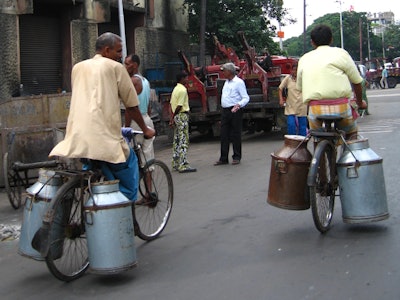
Got milk…laced with paint, detergent and dangerous chemicals? India does. Unfortunately for two-thirds of the 1.2 billion people living in the country various contaminants are making their way into the milk supply.
India is the world’s largest milk producer and churns out 17 percent of the globe’s milk supply. The milk industry in India has long faced scrutiny by many around the world. In 2012, a survey by the country’s Food Safety and Standards Authority found that 68 percent of the country’s milk was contaminated.
Often the milk is diluted with harmless water, sweeteners, skim milk powder, and non-edible solids to increase volume. But many samples also contained fertilizers, hydrogen peroxide, dioxin and detergent.
While India’s Supreme Court has ordered the country’s states to impose life sentences on anyone found contaminating milk, reports have shown that the chemicals also get into milk because cows often eat trash, waste and toxic materials when roaming on the street.
These days, the country’s minister for science and technology says the situation hasn’t improved and that milk is sometimes also laced with paint and caustic soda.
Not only is milk a big industry for India, it is also a sacred drink that’s used in religious rituals and as a cheap source of protein. The contamination doesn’t just threaten India’s way of life — it could have serious health consequences.
“The adulterants added are very hazardous, and could cause serious diseases. Since milk is commonly consumed in everyday diet, the issue is of grave concern,” the minister told Parliament.
The conversation arose in India’s Parliament when the minister was asked if emerging technologies are being employed to find contaminants. A new scanner is now available that can detect adulteration in milk in just 40 seconds. The minister said that in the future a GPS tracking system should also be used to track milk through the supply chain and detect if, when and where it has been tampered with.
The technologies show promise but still have a ways to go to fix India’s contaminated milk problem.
“The adoption and deployment of the innovation in as many villages and milk societies possible would be a step forward in enhancing and implementing the standards and quality of milk,” he said.























